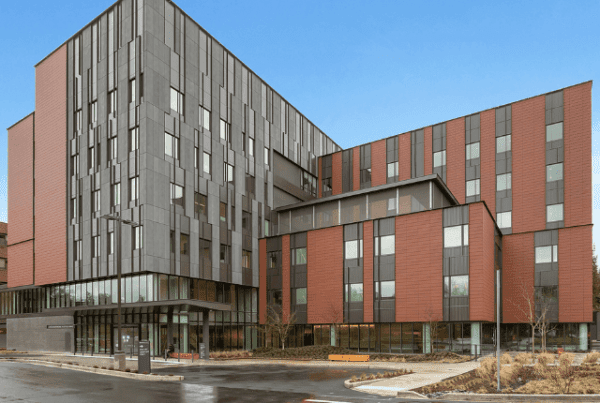Highlights | Shorter hospital stay and improved health outcomes
- Shorter stays can benefit patients’ health.
- Unnecessarily prolonged hospital stays affect bed availability.
- Financial stability of hospitals is impacted by length of stay.
UW Medicine has been working on reducing Length of Stay (LOS) for several years. Mission Forward has brought this work into focus. We are working to improve patient outcomes and increase access to ensure that patients who need UW Medicine’s specialized services in our hospitals can receive them. Learn more about what length of stay means and how UW Medicine is working to improve patient outcomes and access the financial health of our facilities.
What is length of stay?
Why is UW Medicine focusing on length of stay as a part of its Mission Forward initiative?
When a patient needs the specialized services that only a hospital can provide, they are admitted and cared for until they are well enough to be discharged home or a lower level of care such as a skilled nursing facility, adult family home, or respite bed. The number of days a patient spends in the hospital is referred to as their “Length of Stay.”
Shorter stays can be better for patients. Prolonged hospital stays don’t necessarily improve a patient’s health. Sometimes, extended hospital stays can cause complications or result in a hospital-acquired infection.
When patients stay in the hospital longer than clinically necessary, it impacts the availability of hospital beds. If one patient uses a bed because they can’t be discharged from the hospital, another patient may end up waiting in the emergency room, unable to access specialized care or be sent to another hospital.
The financial health of hospitals is impacted by Length of Stay. Many insurance companies pay hospitals based on a patient’s diagnosis, not their length of stay. A patient who stays in the hospital longer than necessary may incur costs that exceed what the hospital will receive in payment, reducing the funds available to support hospital operations and care for other patients.
Why can patients have a long length of stay?
- Clinical teams may find additional conditions that require treatment in addition to the original reason for a patient’s admittance.
- Patients may develop complications from a procedure or medication.
- Care teams may decide to keep patients in the hospital if they don’t have support at home to meet their post-hospital needs.
- Patients may lack a safe discharge option due to unstable housing, limited resources or insurance, substance use disorder, behavioral health needs, or combinations of all the above.
- Skilled nursing facilities, adult family homes, home healthcare providers and other community resources have limited capacity to support new and complex patients.
- Inability to find guardianship or the extended time it takes to get one makes it difficult to secure funding for and transfer to the next level of care.
What is UW Medicine doing to manage length of stay?
UW Medicine is working on many initiatives and improvements to patient care, ranging from care management to financial counseling.

Average cute care length of stay at UW Medicine Hospitals below baseline average.
Learn about the top 10 targeted approaches to ensure a safe and timely discharge for our patients:
- Discharge Huddles: Bringing together the full care team to assess and develop treatment options (e.g., therapists, nurses, social workers, specialists, hospitalists) improves coordination and can support timely discharge to the appropriate care setting.
- Long Length of Stay Meetings: Focusing on patients with complex care needs by bringing together expert care teams to problem solve and overcome barriers to discharge.
- Expected date of discharge: Setting and communicating an expected date of discharge (EDD) based on clinical judgment and patient conditions helps the care team focus on planning a safe discharge early in the patient’s hospital stay.
- Discharge delays and barriers: Early identification and documentation of anticipated delays and barriers to discharge help determine resource needs to discharge patients safely.
- Care management and coordination: Nurses and social workers play a key role in discharging patients to the next level of care. Having sufficient staff relative to the volume and complexity of patients is essential to discharging patients and managing the length of stay.
- Mobility: Deploying mobility aides and creating visibility of mobility services in Epic ensure we maintain a patient’s strength, which is required to discharge patients safely.
- Financial counseling assessment: Having financial counseling to start a Medicaid application or insurance authorization close to a patient’s admission increases the likelihood they will be discharged on time.
- Care management assessment: Having a care management assessment close to admission is critical to identifying potential discharge delays and barriers.
- Point of Entry (POE): Following patients from admission in the emergency department, transfer center, clinic, or other POE to ensure a seamless transition from the inpatient setting to the next level of care or home support.
- Transitional care: Connecting patients to their primary care physician, follow-up care via telehealth, or a venue like Harborview Medical Center’s After Care Clinic often allows for a safe and timely discharge.
- Post-Acute Care (PAC): Knowing that UW Medicine’s physicians and nurses will follow a patient in a UW PAC Network (skilled nursing facility) can alleviate concerns for patients discharged with complex care needs. The PAC Clinical Team works in Epic, coordinates care with UW Medicine specialists and diagnostic services, is on-site at the skilled nursing facility five days per week, is and on-call 24/7.



